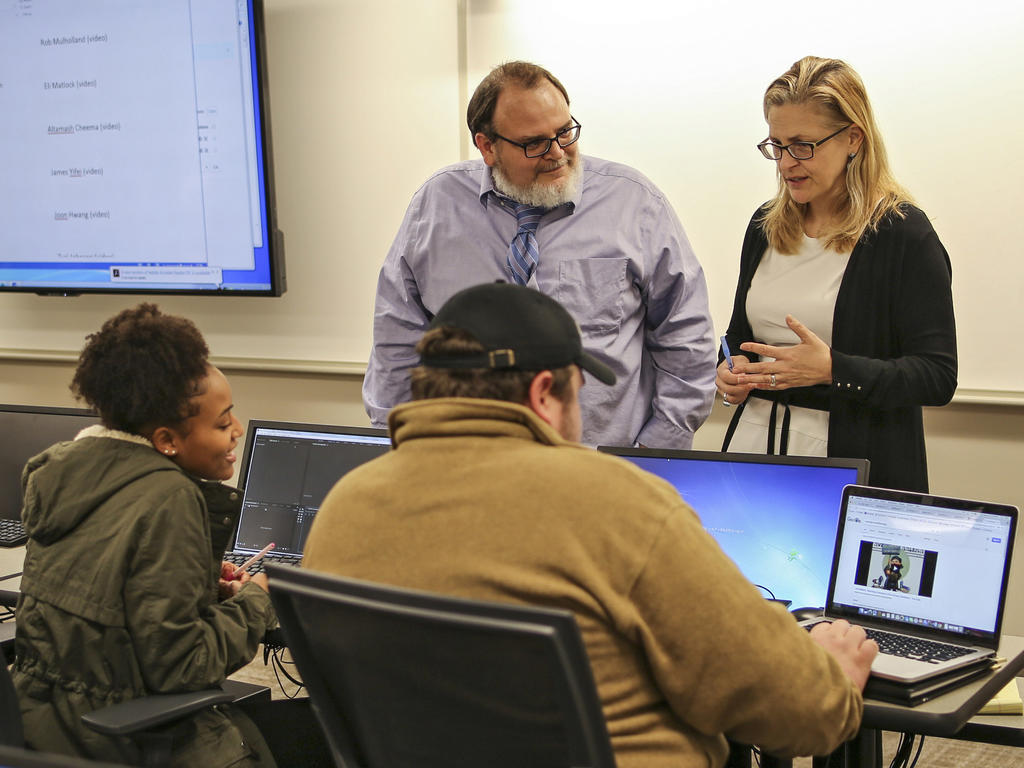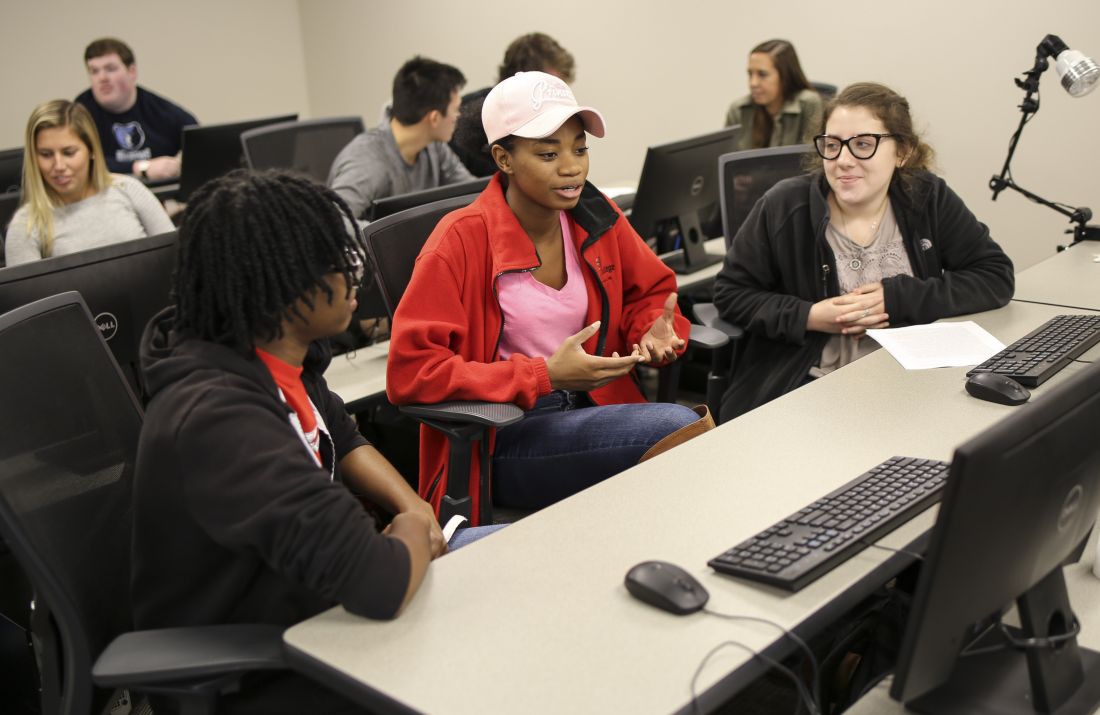
A small request from political science professor Amy Jasperson to video art professor Darren Floyd turned a simple suggestion into an extensive collaborative effort. Jasperson emailed Floyd asking if he could equip her Political Advertising students with sufficient video editing skills to edit their final class projects: a 30-second to one-minute political video ad.
Floyd responded to Jasperson with a counterproposal: to bring his Film and Experimental Video classes and her students together to create a joint project, simulating a real-world situation. “Knowledge about writing and moving-image production is not communicated by teaching someone a software,” says Floyd. “In the liberal arts, we teach content areas, concepts, and creative practices, but the specific software’s are just tools to achieve our intellectual and creative goals.”
Using the model of an advertising agency, the students from the political advertising class were paired with students from the video art class. They created the videos in two weeks, with one week for pre-production and another for production and editing.
“The political science students brought their knowledge of the research findings and the creative artists brought their knowledge in creative design. The artists provided the tools to execute the vision of the political scientists,” says Jasperson, “Both groups of students had to listen and work collaboratively with their creative partner in order to produce a successful spot.”
Like any collaborative project, this one came with challenges. Floyd explains that there was in imbalance in both the number of students, and the level of experience in the respective courses. Rather than being discouraged, Floyd and Jasperson encouraged their students to work even harder, and students from both classes strengthened their expertise with legitimate skills they can now apply to their future careers.
“Students experienced the process of working on a team to complete a clear task—to construct a message informed by research and aimed at a specific target audience,” says Jasperson, “They also had the opportunity to communicate their vision to a creative team coming from a different discipline. They had to provide the necessary audio and video materials that could be combined to achieve their vision, communicate effectively about their vision, provide and receive feedback, and work together constructively to meet a deadline.”
Ultimately, the collaborative aspect of the project—working together as a team across disciplines—was more important than the final product. Raven Burks ’18, one of Jasperson’s political science students, says “Through this project, I learned how important it was to follow up and listen to the ideas of other people in other fields. I'll think about this in the future if I work on campaigns.”
By John Mark Stodola ’19
